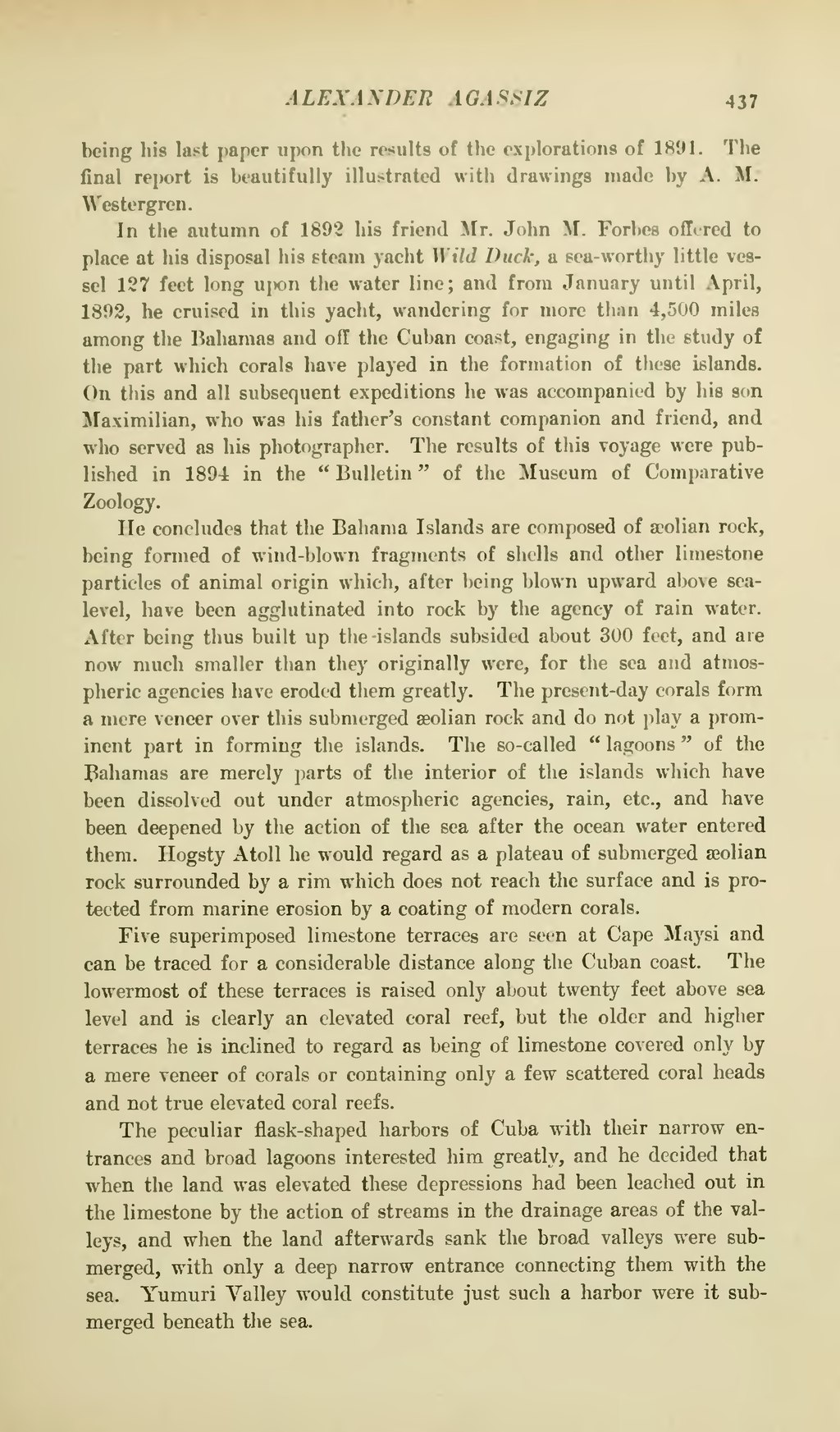being his last paper upon the results of the explorations of 1891. The final report is beautifully illustrated with drawings made by A. M. Westergren.
In the autumn of 1892 his friend Mr. John M. Forbes offered to place at his disposal his steam yacht Wild Duck, a sea-worthy little vessel 127 feet long upon the water line; and from January until April, 1892, he cruised in this yacht, wandering for more than 4,500 miles among the Bahamas and off the Cuban coast, engaging in the study of the part which corals have played in the formation of these islands. On this and all subsequent expeditions he was accompanied by his son Maximilian, who was his father's constant companion and friend, and who served as his photographer. The results of this voyage were published in 1894 in the "Bulletin" of the Museum of Comparative Zoology.
He concludes that the Bahama Islands are composed of æolian rock, being formed of wind-blown fragments of shells and other limestone particles of animal origin which, after being blown upward above sea-level, have been agglutinated into rock by the agency of rain water. After being thus built up the islands subsided about 300 feet, and are now much smaller than they originally were, for the sea and atmospheric agencies have eroded them greatly. The present-day corals form a mere veneer over this submerged æolian rock and do not play a prominent part in forming the islands. The so-called "lagoons" of the Bahamas are merely parts of the interior of the islands which have been dissolved out under atmospheric agencies, rain, etc., and have been deepened by the action of the sea after the ocean water entered them. Hogsty Atoll he would regard as a plateau of submerged aeolian rock surrounded by a rim which does not reach the surface and is protected from marine erosion by a coating of modern corals.
Five superimposed limestone terraces are seen at Cape Maysi and can be traced for a considerable distance along the Cuban coast. The lowermost of these terraces is raised only about twenty feet above sea level and is clearly an elevated coral reef, but the older and higher terraces he is inclined to regard as being of limestone covered only by a mere veneer of corals or containing only a few scattered coral heads and not true elevated coral reefs.
The peculiar flask-shaped harbors of Cuba with their narrow entrances and broad lagoons interested him greatly, and he decided that when the land was elevated these depressions had been leached out in the limestone by the action of streams in the drainage areas of the valleys, and when the land afterwards sank the broad valleys were submerged, with only a deep narrow entrance connecting them with the sea. Yumuri Valley would constitute just such a harbor were it submerged beneath the sea.
